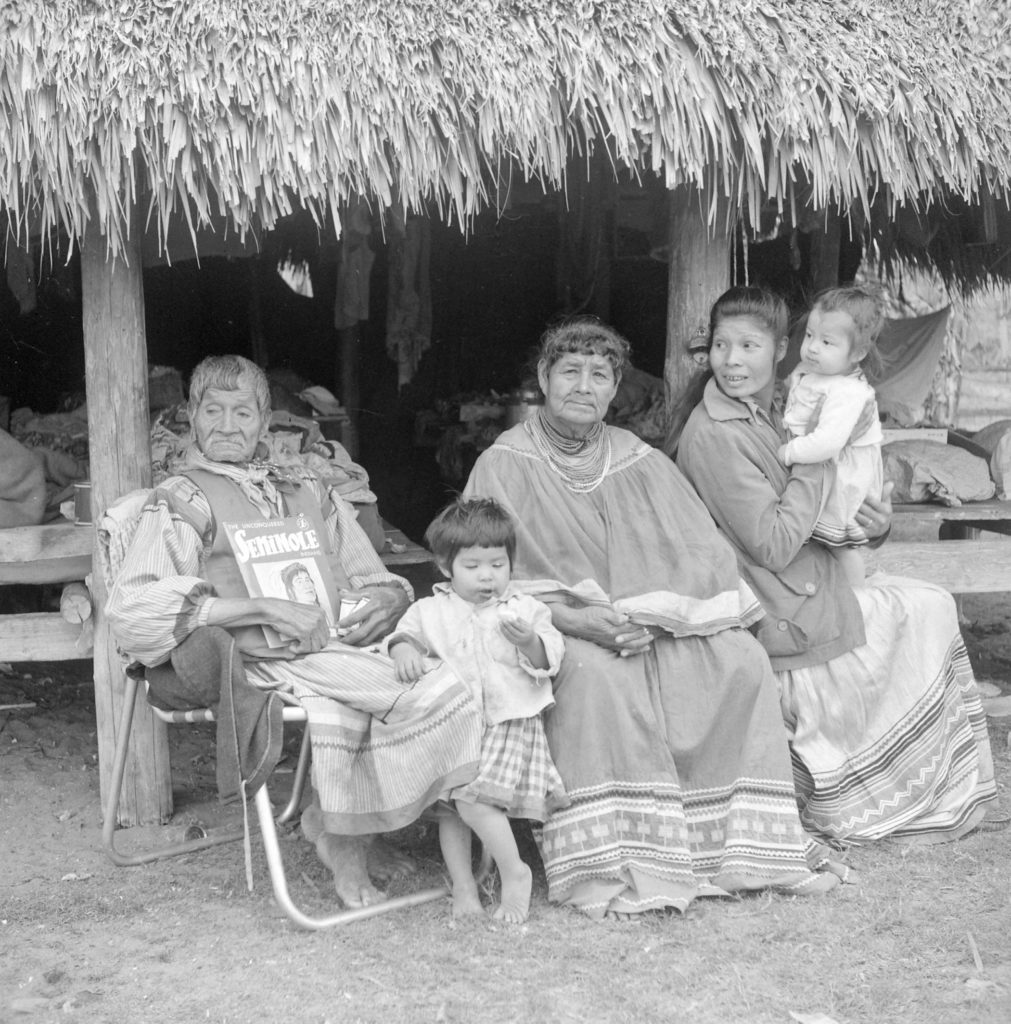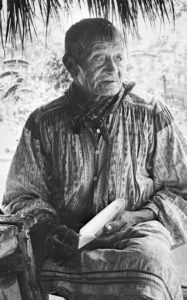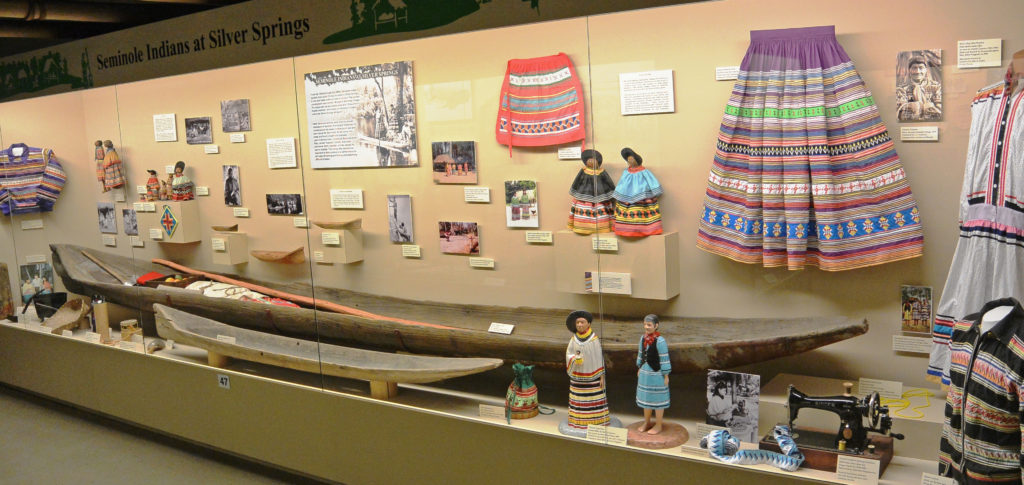From the 1920s through the 1960s, families of Seminole and Miccosukee people from South Florida traveled to Silver Springs to work in the tourist camp there. The camps vaguely resembled their traditional family camps in the Everglades, but with electricity and gawking tourists. Tribal members would stay at the camps for short stretches of time to demonstrate traditional crafts such as patchwork sewing and to sell souvenirs.
Visitors saw a limited version of a traditional “clan” camp, where an extended family or clan lived together. The cook fire was the center of the camp and was arranged in a special pattern—four logs, like spokes, each burning at the hub, were pushed together or pulled apart to control the heat. Individual chickees, covering raised platforms, were for sleeping, sewing and making crafts. Mosquito nets were essential for sleeping.

Camp life was a way to make a living when Native Americans in Florida did not have many other options. The Glades had been heavily altered to create new farmland and vast swaths of South Florida were now fenced, ending the days of open ranges and living off the land by original Floridians. During the 20th century, Seminole and Miccosukee people faced discrimination and many jobs were not open to them. Working as a laborer or hunting guide or posing for photos at a tourist camp were how most folks got by.
The earliest camp at Silver Springs was Metzger’s Seminole Village, run by a fellow named Charles Metzger. He was not popular with the families at the camp. One story helps explain why.
Charlie Cypress, a well-known canoe carver, was seriously injured with an axe while hewing out a cypress log. He needed medical attention and Metzger ignored him, which was not only wrong but quickly resulted in the failure of his business operation in Silver Springs. Ross Allen, who ran the Reptile Institute at Silver Springs, took Charlie to the hospital in Ocala and likely saved his life. After the accident, Charlie’s family refused to deal with Metzger, and the camp became part of Ross Allen’s Reptile Institute. Older tribal members in South Florida still speak of the event today, and Ross Allen is remembered fondly.
Ocala was one of the northernmost sites where visitors could see and learn about the Seminole people and their culture. In its heyday (pre-interstate and mega-attractions), Silver Springs was a major destination that saw hundreds of thousands of visitors annually.

Historically, travel by water has been vital to the Southeastern Indians, who have used canoes for at least 5,000 years. Early dugouts were made from pine, using fire to hollow out the log. After the introduction of metal tools, the Southeastern Indians (and many non-native settlers) carved these boats from the massive trunks of bald cypress trees.
Charlie Cypress, who was born around 1868 and lived until 1960, and his family were mainstays of the Silver Springs tourist camp for years. He demonstrated carving full-sized canoes with simple tools and made smaller models to sell. By the time he passed, the iconic Seminole canoe had been replaced by motorized airboats and “swamp buggies” for traversing the vast Everglades.
The Silver River Museum is lucky to have a full-sized canoe and several of the smaller models made by Charlie Cypress (the Ah-Tah-Thi-Ki Museum at the Big Cypress Seminole Indian Reservation and the Florida Museum of Natural History at the University of Florida also curate examples of his work). Visit the Silver River Museum any weekend to find the Seminole exhibit and be sure to explore the Dugout Canoes: Paddling the Americas exhibit, which includes local prehistoric examples. OS

Scott Mitchell is a field archaeologist, scientific illustrator and director of the Silver River Museum & Environmental Education Center, located at 1445 NE 58th Ave., Ocala, inside the Silver Springs State Park. To learn more, go to silverrivermuseum.com.






